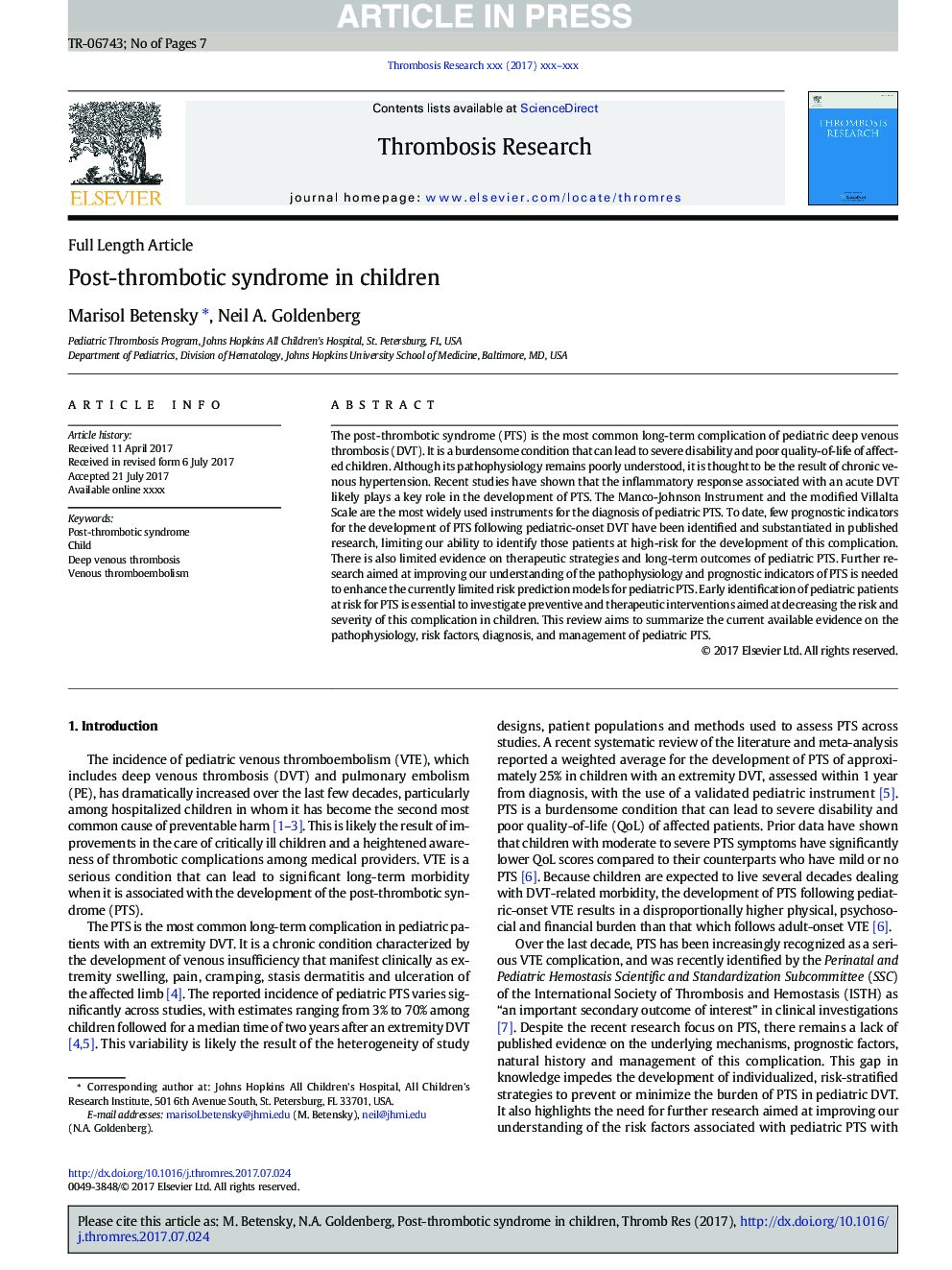| Article ID | Journal | Published Year | Pages | File Type |
|---|---|---|---|---|
| 8679423 | Thrombosis Research | 2018 | 7 Pages |
Abstract
The post-thrombotic syndrome (PTS) is the most common long-term complication of pediatric deep venous thrombosis (DVT). It is a burdensome condition that can lead to severe disability and poor quality-of-life of affected children. Although its pathophysiology remains poorly understood, it is thought to be the result of chronic venous hypertension. Recent studies have shown that the inflammatory response associated with an acute DVT likely plays a key role in the development of PTS. The Manco-Johnson Instrument and the modified Villalta Scale are the most widely used instruments for the diagnosis of pediatric PTS. To date, few prognostic indicators for the development of PTS following pediatric-onset DVT have been identified and substantiated in published research, limiting our ability to identify those patients at high-risk for the development of this complication. There is also limited evidence on therapeutic strategies and long-term outcomes of pediatric PTS. Further research aimed at improving our understanding of the pathophysiology and prognostic indicators of PTS is needed to enhance the currently limited risk prediction models for pediatric PTS. Early identification of pediatric patients at risk for PTS is essential to investigate preventive and therapeutic interventions aimed at decreasing the risk and severity of this complication in children. This review aims to summarize the current available evidence on the pathophysiology, risk factors, diagnosis, and management of pediatric PTS.
Related Topics
Health Sciences
Medicine and Dentistry
Cardiology and Cardiovascular Medicine
Authors
Marisol Betensky, Neil A. Goldenberg,
